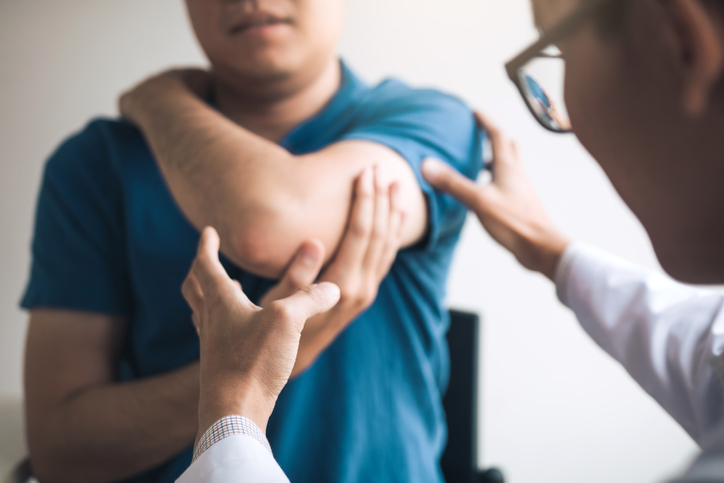Pain
6 Possible Causes of Left Arm Pain

Arm pain involves stiffness, discomfort, swelling, soreness or pain that occurs anywhere from the shoulder to the fingers. Oftentimes, it results from overuse, injury or inflammation. However, pain in the left arm can stem from various causes.
Since there is a wide range in the severity of conditions leading to left arm pain, it is critical to notice symptoms and seek medical assistance to lessen the risk of health complications. Six potential causes of left arm pain include, but are not limited to, heart problems, injuries, herniated disc, pinched nerve, vascular thoracic outlet syndrome, and tendinitis.
Heart problems
A heart attack occurs when a blockage prevents blood flow into the heart. Arm pain can occur in one or both arms, or not at all. Seek emergency medical care if a heart attack is suspected. Additional symptoms include, but are not limited to, the following:
- Back, neck, shoulder or jaw pain
- Chest pain or pressure
- Cold sweat
- Dizziness
- Fainting or light-headedness
- Fatigue
- Nausea or vomiting
- Shortness of breath
Angina is caused by decreased blood flow to the heart and is a symptom of coronary heart disease. Reduced blood flow limits the amount of oxygen-rich blood in the heart. Symptoms of angina are similar to those of a heart attack; however, they typically only last a few minutes. Symptoms also improve with rest.
Injuries or overuse
A fractured bone may result from a physical injury. This is especially true if left arm pain begins suddenly following an accident. Symptoms include swelling, bruising, numbness or weakness in the arm, etc. Seek immediate medical attention if a fractured bone is suspected.
A sprain or strain can occur due to an injury. A sprain is a stretch or tear of a ligament: a strain is a stretch or tear of a muscle or tendon. Symptoms include bruising, swelling, decreased range of motion, pain, muscle weakness, etc.
Bursitis can result from repetitive motions or overuse of the shoulder. Bursitis occurs when a bursa becomes inflamed or irritated. Symptoms include pain, swelling, tenderness, limited range of motion, etc.
A rotator cuff tear or injury can produce constant pain and weakness in the arm and shoulder. It is often caused by lifting heavy objects or performing repetitive motions. Symptoms include arm weakness, reduced range of motion, shoulder pain, etc.
Herniated disc
A herniated disc is also referred to as a slipped or ruptured disc. Spinal discs are rubbery cushions that sit between individual vertebrae. As a disc naturally degenerates with age, the soft jelly-like center of the disc (nucleus) can herniate or tear through the tougher, rubbery exterior (annulus). Symptoms include arm or leg pain, numbness, muscle weakness, burning sensation, etc.
Pinched nerve
Nerves can become compressed or inflamed when bones or tissues in the shoulder, neck or elbow press against a nerve. Symptoms include pain, numbness, tingling, or burning sensation in the arm. Pain may also increase when moving the arm.
Vascular thoracic outlet syndrome
Thoracic outlet syndrome (TOS) is a condition in which the nerves and/or blood vessels in the thoracic outlet become compressed, irritated or injured. The thoracic outlet is a narrow space located between the collarbone and the first rib. The nerves and blood vessels that move down the arm, and the muscles from the neck to the shoulder, run through the thoracic outlet. Progressive nerve damage can occur if left untreated. Symptoms include, but are not limited to, arm weakness, swelling, numbness, tingling, cold hand or arm, weak pulse, or discoloration in the hand.
Tendinitis
Tendinitis, or tendonitis, is the inflammation or irritation of a tendon. Tendons are thick fibrous cords that attach muscles and bones. Tendinitis is either acute or chronic and can develop in any tendon. Symptoms of tendonitis of the shoulder or elbow include difficulty moving the affected joint, tenderness to the touch, swelling, loss of motion, etc. The risk of tendonitis increases with age.






